The title of ‘Royal Town’ was bestowed by the monarch and offered great privileges and rights, thanks to which with the towns in question would grow rich and prosperous. Whether through beer-brewing, or the mining of precious metals, prosperity would follow. So, which of the Central Bohemian towns enjoyed this exceptional status and recognition of by the king’s subjects and the nobility, including the king himself?
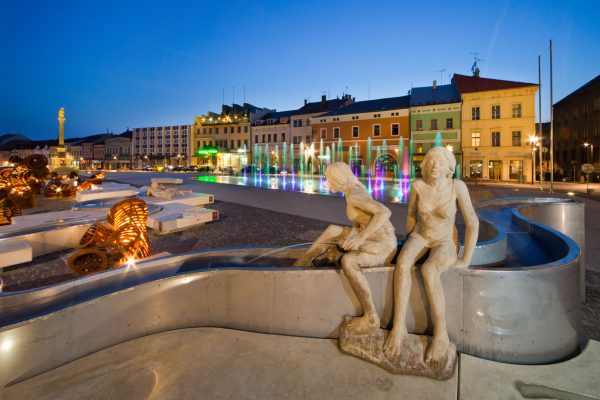
Mladá Boleslav
The town is named after its founder, Prince Boleslav II, nicknamed ‘the Young’. The surrounding area was part of the Přemyslid estate and in the second half of the 10th century a fortification was established here, which stayed in Czech ruling hands up until the entire 13th century, when a large part of the Mladá Boleslav region belonged to the Lords of Markvartice.
Certain town-like privileges were acquired by the original market settlement in the 13th century and yet more in the 14th. During the Hussite wars, the inhabitants joined in on the side of the rebellion. Despite this, religious freedom remained, thanks to which the power of the Protestant Unity of the Brethren grew. The town became their most important base, its reputation grew and a period of economic and cultural prosperity began.
In 1600, Boleslav bought itself Royal Town status, during the reign of Emperor Rudolf II. Its modern history is inherently linked to the automotive industry – in 1895, Václav Klement and Václav Laurin began factory production of velocipedes here. The first car was built in Mladá Boleslav in 1905 and from 1925 we know the company under its ŠKODA brand.
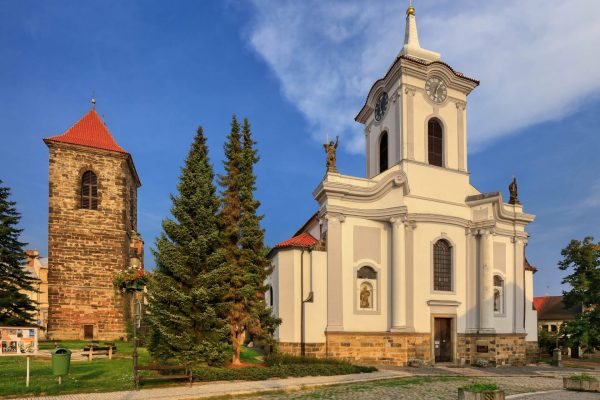
Český Brod
The town was founded by Jan I, the Bishop of Prague; it most likely dates from the 12th century. Jan chose a location on one of the most important trade routes connecting Prague with southern and eastern Europe.
After the mid-13th century, another Bishop of Prague, Jan III of Dražice, promoted the market settlement to a town, then known as Biskupský Brod. The name Český Brod was only used from the 14th Century onwards.
Due to its convenient location on an important route, the town benefited from tourism and became an important business and accommodation base. In 1437, the Emperor and King Sigismund of Luxembourg promoted Český Brod to the status of a royal free town.
Český Brod is one of the few Central Bohemian towns where the medieval walls and bastions have been at-least partially preserved. The brewing of beer also had a significant impact on its development and renown. At present, this ancient tradition is being kept-up by the nearby Kounice brewery.
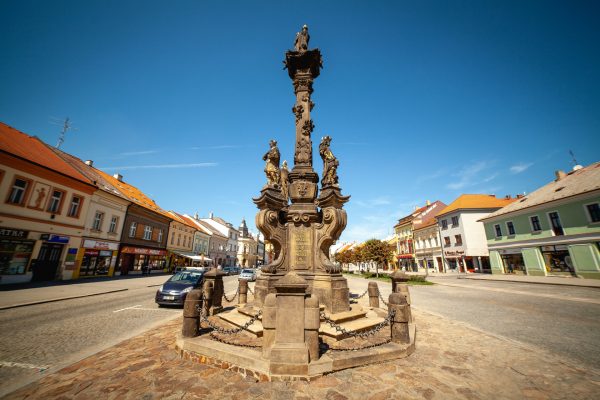
Rakovník
Rakovník was established on a significant trade route and its roots reach back to around 1300. The ancient history of Rakovník was greatly influenced by the status of nearby Křivoklát Castle.
Rakovník had the status of a chamber town and was dependent on Křivoklát. It was only at the hands of Emperor Rudolf II that it was promoted to a royal town, in 1588, so this specific type of ‘fiefdom’ to the castle came to an end.
Major growth took place in the second half of the 16th century when new stone walls and gates were built, and the cultivation of hops and brewing boomed. The outbreak of the Thirty Years’ War was a great blow to Rakovník; at the start of the conflict the armies of the Estates and the Coalition clashed in battle close by.
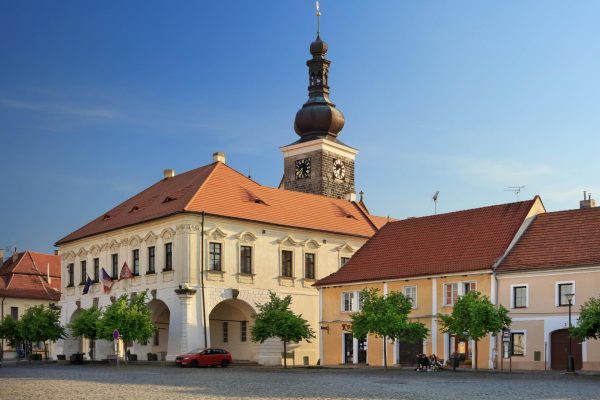
Velvary
Velvary originated on an ancient trade path, progressively growing from a medieval settlement into a market village. The oldest mention in writing dates back to 1282, but it was not until after 1357 that the settlement was acquired by the crown and seemingly promoted to the status of a town by Charles IV.
When exactly Velvary acquired its urban privileges is unknown, as the town archive burned down in 1482 and many important records with it. For this reason, King Wladislaus Jagiellon re-conferred the rights and privileges granted in the destroyed documents. However, the town only uses the epithet Royal after 1593 and it is only explicitly described as a royal town in papers dating to the second half of the 18th century, specifically the charters of Marie Theresia and Joseph II. It kept this distinction until 1848.
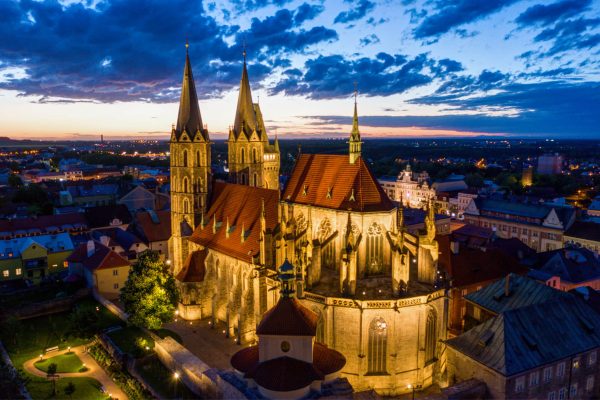
Kolín
Among the oldest written records to have been preserved are the scrolls of King Přemysl Otakar II. In one of the documents, Přelouč is granted the same rights and freedoms as Kolín and Kouřim, which proves that during his reign, Kolín was already a respected royal town.
Another king of the Přemyslid dynasty, Wenceslas II also realized its importance and granted the town a host of privileges. Members of the Luxembourg family, John and his son Charles IV, also granted the town many important rights, and Kolín flourished. For many years, silver mining was also a factor in terms of its prosperity – a rare ore deposit was located nearby. The town of Kutná Hora would later evolve from the mining settlement located there. When the Hussite rebellion broke, Kolín, with its predominantly German patricians, joined the side of the Emperor. However, when the Hussite army drew near in 1421, the inhabitants voluntarily conceded defeat. Its importance dropped to that of a lesser town until 1519, when it managed to regain its previously held status.
Among the symbols of its rich and long history is the Church of St Bartholomew, the construction of which began in the mid-13th century at the behest of King Přemysl Otakar II. The restoration of the early Gothic church after a devastating fire in 1349 was undertaken by renowned architect Petr Parléř. The architect behind another significant reconstruction more recently was the acclaimed Josef Mocker.
Přemyslid Towns

Nymburk
The royal town of Nymburk was founded in the second half of the 13th century by Přemysl Otakar II, replacing the previous small settlement. Under the reign of Wenceslas II i.e. the turn of the 13th and 14th century, Nymburk was almost impenetrable – two rows of fortification and moats were built, transforming the town into a strategically important fortress as well as a substantial link in the chain of fortified towns around Prague.
Nymburk was a mainstay of royal power and ranked among the most important towns in the country throughout the whole medieval period. It also became a refuge for Queen Elisabeth of Bohemia, who fled Prague from the intrigues of her brother-in-law and found a safe haven behind its walls. Her husband, King John of Luxembourg did not forget the town’s loyalty and repaid it through the granting of many privileges. His son Charles IV also contributed to its influence and the wealth of the people of Nymburk grew. The locals enjoyed this prosperity and renown for centuries, practically up to the beginning of the 17th century.
The most crushing blows to strike the town came with the Thirty Years’ War. Prosperity did not return until the end of the 17th century. Another tragedy occurred in 1838, when a devastating fire forever changed the appearance and aura of Nymburk, its ancient historical character now irretrievably lost.
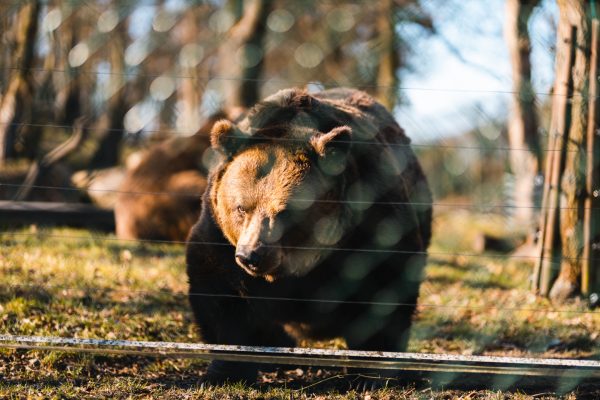
Beroun
The location of Beroun was once considered one of the busiest areas of Central Bohemia. In the 11th century, a settlement called Na Brodě was established, as it lay in on an important trade route from Prague to Bavaria whilst simultaneously being the shortest and easiest connection between Prague and Pilsen.
The first written mention of the town is found in the charter of King Přemysl Otakar II from 1265, in which the Latin form of Beroun – Verona – is used. It was he who founded the settlement from which the town developed. During King Wenceslas II’s reign the town underwent significant rebuilding efforts, creating its historical core, which has been broadly preserved in the same form to this day. Another important development at the hands of Wenceslas II was the granting of privileges in 1303, transforming Beroun into a flourishing royal town.
The prosperity continued, and under Charles IV many crafts burgeoned, including that of pottery, and Beroun red-white painted ceramics became famous throughout the realm. After the turbulent years of the war, another era of unprecedented expansion occurred at the time of the reign of Wladislaus Jagiellon. The town began to evolve into its current from around the mid-18th century.
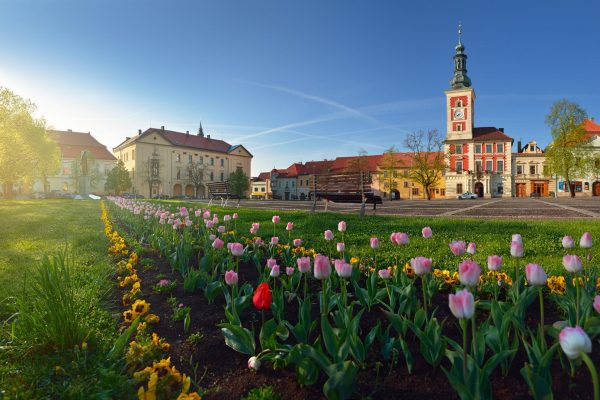
Slaný
The chronicler Václav Hájek of Libočany tells the story behind the name of the town, which means ‘salty’. It concerns the discovery of a salt spring here, after which the original ancient settlement was named.
The first written report on Slaný dates back to 1262 and was discovered in the charter of King Přemysl Otakar II. The town was most likely promoted to royal status by Wenceslas II at the turn of the 13th and 14th centuries. During the Hussite struggles, it was among those to be spared. These included Plzeň, Žatec, Louny, Písek and Klatovy. The locals pledged their allegiance to King George of Poděbrady, to whom they were loyal even before he became king.
The inhabitants experienced considerable economic development under the reign of Wladislaus Jagiellon as well as in the early days of the Hapsburg dynasty. Unfortunately, however, the growth of the town was stopped during the post White Mountain period, as it had been on the losing side of the conflict. It was the only royal town to be punished by being pledged to creditors in 1623 and sold into hereditary ownership of the Lords of Martinice a few years later. It remained tied to them until 1794, before passing under the protection of the sovereign.
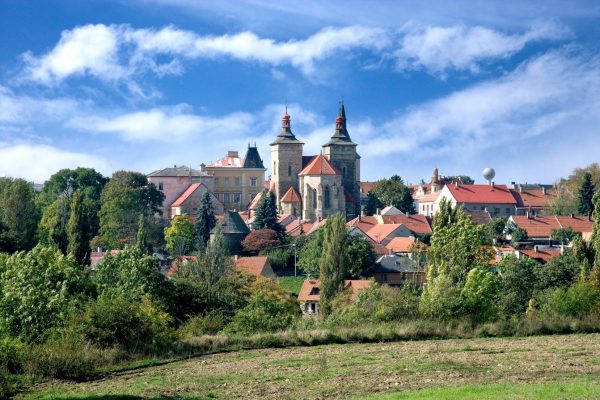
Kouřim
It is thought the town was founded before 1250 by King Wenceslas I. This occurred shortly after the destruction of Kouřim castle. The first written mention dates to 1261 and is found in the document whereby King Přemysl Otakar II presents Kouřim along with Kolín as an example to the other royal towns. In the first half of the 14th century, the town was engulfed by a large fire, and emperor Charles IV himself made a significant contribution to its restoration. During the Hussite wars, the locals joined the rebellion, and the warlord Jan Žižka of Trocnov settled here. The people of Kouřim remained loyal to the Hussite cause even after the Battle of Lipany, and did not submit to Emperor Sigismund until 1436.
The turn of the 15th and 16th century was marked by prosperity, but the devastating Thirty Years’ War ended the position of Kouřim as one of the most important towns of the Bohemian Kingdom. The respected privileges were only returned to the town in 1740, under the reign of Charles VI. Kouřim lost it status as the main town of the region, a position it held for centuries, after the territorial reforms of Emperor Joseph II.
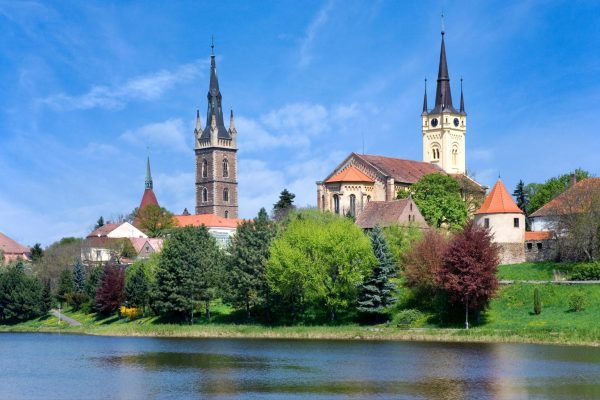
Čáslav
King Přemysl Otakar II, dubbed ‘the iron and gold king’ also played a role in the history and development of Čáslav. During the reign of this monarch, it was promoted to a royal town, thereby gaining the respective privileges. However, the site of the town had been settled by Slavic tribes long before, during the 9th Century. Its origins are associated with the famed Slavníkovci.
From the 11th century it was owned by the Přemyslids, who would make the hill-fort one of the hubs of their power. At the time of the Hussite wars, Čáslav first joined on the side of Sigismund of Luxembourg, before switching to the side of the Hussites in 1421. This particular period of Czech history is also linked to the precious discovery that took place in Čáslav.
In 1910, the remains of the famous general Jan Žižka were found in the niche of the Marian Chapel. A sad chapter in its history is that of two major fires. The first occurred in 1452, and the second, even more devastating, which consumed almost the entire town, in 1522. After the Thirty Years’ War, the town was deep in debt, and its streets and squares almost deserted. Another event significantly altering the historical appearance of Čáslav were building efforts during the early 19th century, which were carried out in a manner quite insensitive to the town’s original Renaissance and Baroque character.
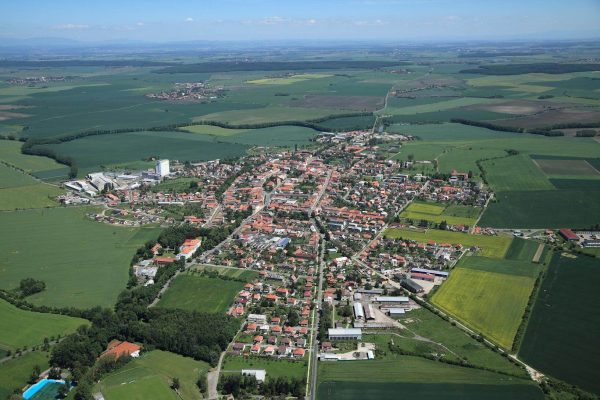
Městec Králové
The town of Městec Králové was the birthplace of one of the most famous rulers of the Přemyslid dynasty – Přemysl Otakar II. The legend states that his mother, Queen Kunka, gave birth to him en-route home to Prague, delivering the baby in Městec. Přemysl did not forsake his birthplace, and once crowned King promoted it to the status of a town, granting it numerous privileges of the royal chamber as well as the emblem of a lion. There was originally a manor house located in the vicinity, but the creation of the town is not mentioned until the 13th century.
Emperor Charles IV also granted important privileges to the town and pledged it to his wife Anna Svídnická. Charles’s son Wenceslas IV is described as the patron of the town, who reaffirmed its position and brought it back under the royal chamber’s patronage. There follows a period in which the town changed hands a number of times. Following the Hussite rebellion, it was almost as if the town had been cursed and was struck by one disaster after another.
During the Thirty Years’ War it was almost destroyed, and what the soldiers left standing was laid to waste during the 18th century by several large fires that ravaged the town. It was only at the turn of the 19th and 20th century that a new chapter in the town’s history came to be written, as extensive rebuilding was launched; Městec Králové has slowly grown and prospered ever since.
Royal Mining Towns
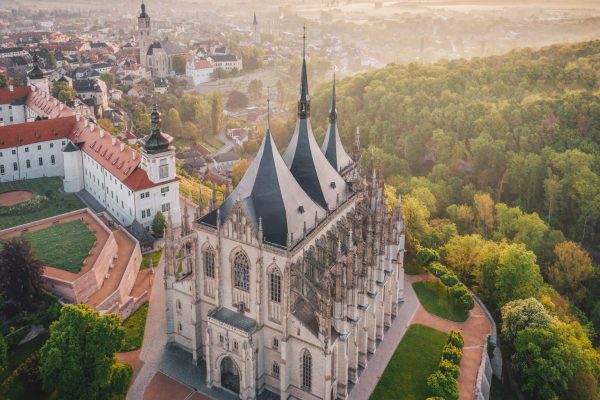
Kutná Hora
Kutná Hora experienced a period of great prosperity and became the second most important town in the country after Prague. It owed all of this to the existence of silver ore deposits, which were discovered as early as the late 10th century by the Slavníkovci noble family. However, the unprecedented expansion of what was originally a small mining settlement only took place in the 13th century.
News of its riches spread quickly, even beyond the borders of the empire, and many new settlers came to the region. Even so, the mining settlements had no declared status, at first. The change came in 1300 under the reign of King Wenceslas II, when legislation dealing with the running of mines was put in place. The settlements acquired further rights and privileges during the reign of the Luxembourgs. The central mint of the kingdom was transferred to Kutná Hora, the Prague Groschen silver coin was minted here and the town became the financial centre of the entire empire.
The first problems began to appear towards the end of the 14th century, as the surface resources were being depleted and the mining operations slowing down. At the time of the Hussite wars, the mining ceased completely, and it was only after the election of Wladislaus Jagiellon as King that prosperity returned. Problems concerning the mining returned at the beginning of the 16th century with more to follow after the Battle of White Mountain.
The closure of the mint in 1727 was a clear indication that this famous era in the history of Kutná Hora was now over. Its magnificent past and picturesque beauty were appreciated by artists during the National Revival, and many years later by UNESCO, which inscribed the historical centre of Kutná Hora onto the World Heritage List.
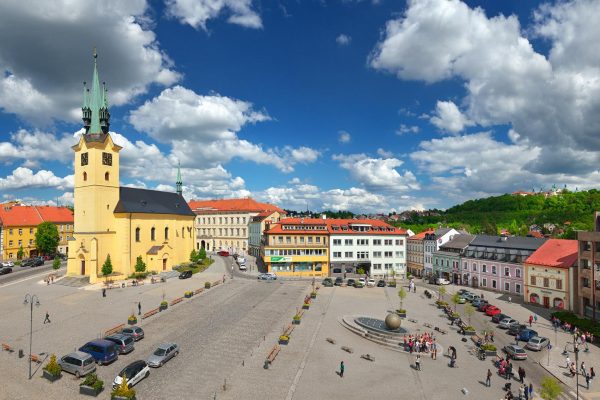
Příbram
Mining has a long tradition in Příbram. Both silver and iron ore were mined here, and in modern times – from the mid-20th century – uranium. In the 18th and 19th centuries, Příbram’s silver ore deposits were so plentiful that the town was considered to be the silver hub of the entire Hapsburg empire.
The peak of the mining expansion in the Příbram region lasted around a hundred years, but from the 1880s onwards it began to decline. The location itself was inhabited long before the mining began, however. By the 13th century there was a homestead on the site, already bearing the name Příbram. The first Archbishop of Prague, Arnošt of Pardubice, also played a role in the town’s development, having a small stronghold and a second church built here. The archbishop’s estate grew and the importance of the whole settlement increased. Following the Hussite wars, since the town had joined the rebellion, it was taken out of the hands of the Church and became crown property.
The monarch had the town pledged as surety to creditors and it was only in 1579 that he promoted Příbram to the status of a royal town. The ensuing prosperity did not take long to arrive. Travelling pilgrims also became an important source of income for the locals, since the most famous Marian pilgrimage site, the Holy Mountain complex, a true gem of the Baroque period, lies near Příbram.
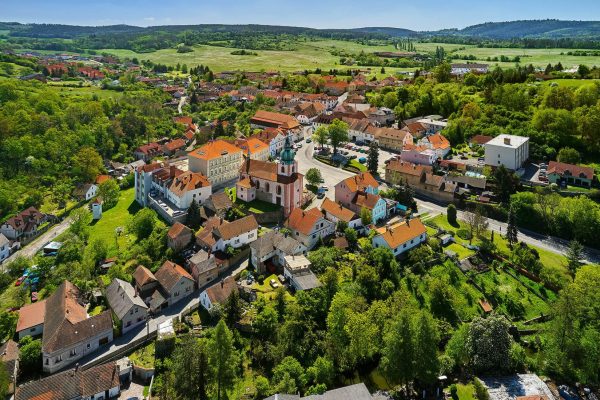
Nový Knín
Gold was likely obtained in the vicinity of Nový Knín through both mining and panning. The area became inhabited in the early Middle Ages and a permanent settlement is mentioned only from the 9th century onwards. Nový Knín was first listed as a town in the charter of Emperor Sigismund of Luxembourg dating back to 1437. King George of Poděbrady also had a document drawn up confirming the towns privileges. As in other towns, the mining operations were put on hold during the Hussite rebellion, but prosperity would return after the wars.
King Wladislaus Jagiellon had the town’s privileges reconfirmed while also granting a number of others. The end of the 15th century was marked by a great expansion of the mining business, and the mining of gold ore continued into the 16th.
Funding shortages during the reign of Emperor Rudolf II, despite a loan being requested from the monarch, meant that the mining had to be curtailed, which brought about a gradual decline. Efforts to regain the town’s lost glory and revive mining activity took place around 1691, but were unsuccessful. With the exception of several further efforts to put the mines back into operation, mining came to a definitive end in the early 18th century and Nový Knín gradually became a quiet rural town.
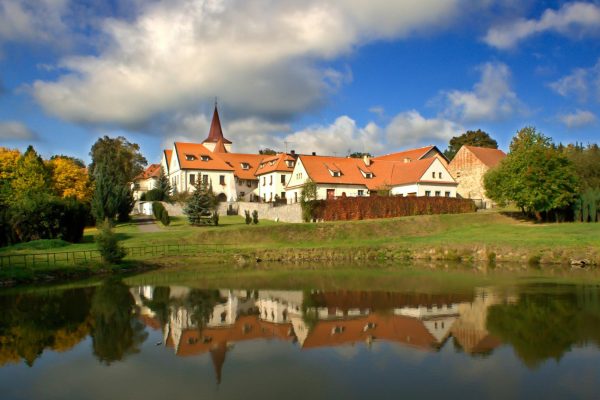
Jílové u Prahy
Jílové was formed by the merging of a number of mining settlements and its origins are closely associated with gold mining. The town was already in existence by the 13th century, however, the first mention in writing dates back to 1331 from the papers of Oldřich Zajíc of Valdek. Emperor Charles IV promoted Jílové to the status of a royal town around 1350.
The acquisition of a number of important rights and privileges meant growth and prosperity, but during the times of the Hussite rebellion, all mining operations were suspended. The mining operations in Jílové experienced a small revival under the reign of Wladislaus Jagiellon, who reaffirmed the privileges held by the town.
The arrival of another turbulent period, the Thirty Years’ War, meant yet another stagnation of the industry and a subsequent decline. Information on gold mining and the history of the town can be found at the Regional Museum in Jílové u Prahy.
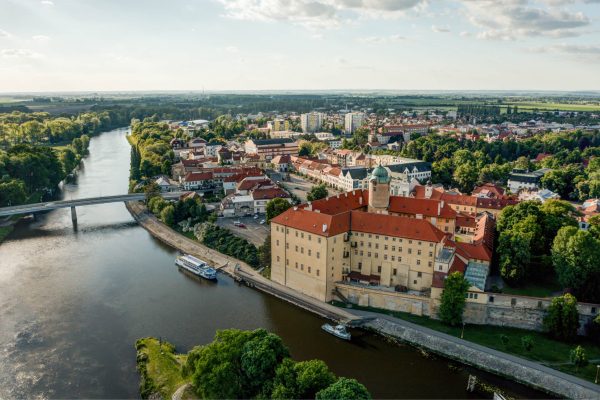
Poděbrady, Town of the Hussite King
Poděbrady is both a spa town as well as being connected to one of our most admired and important monarchs, king George. The town originated on the trade route connecting Prague to Poland.
In the second half of the 13th century, Poděbrady was acquired by King Přemysl Otakar II who had a moated stone castle built, at the foot of which the inhabitants gradually settled. The town of Poděbrady was frequently a subject of interest to Czech rulers. It owed this attention to the surrounding landscape, which was covered in dense forests ideal for hunting, the favourite pastime of rulers and nobles. Visitors included for example, Přemysl Otakar II, Wenceslas II, or John of Luxembourg. Its greatest period of prosperity was under the administration of the Lords of Kunštát, who acquired it from Emperor Charles IV.
The most famous figure of this family was George of Poděbrady, dubbed ‘the king of two peoples.’ He was the only Czech king not descended from the ruling class, but elected by it. An excellent diplomat and politician, he pushed for non-violent solutions to international conflicts and his proposed peace treaty was ahead of its time by many centuries. He confirmed his favourable view of Poděbrady in 1472, when he promoted the settlement to town status.
Poděbrady also experienced an era of prosperity under Ferdinand I Hapsburg. The visiting Emperor was thrilled by the possibilities the area offered with regards to hunting. He therefore paid off the then indebted estate, and incorporated it among the estates belonging to the royal chamber. Empress Maria Theresa was also interested in the château and had it rebuilt to its present form. A historical milestone in modern times was 1905, when the German landowner Prince von Bülow visited. This famous dowser discovered a spring of mineral water in the courtyard, and the first spa season was soon at hand.
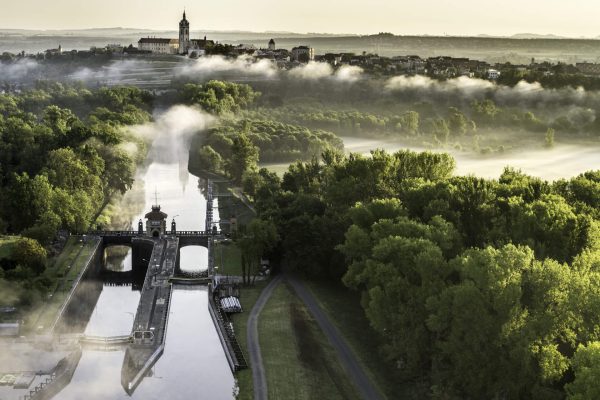
Mělník, Royal Dowry Town
Many Czech monarchs knew very well just how necessary it was to keep their other-halves happy, and the existence of Dowry Towns serves as an example of this. There were nine such towns in total, and Mělník was one of them.
It was Emperor Charles IV who granted the town this exceptional status as a permanent fixture. Long before that, the fertile land lying at the confluence of two rivers was settled by the Slavic tribe called the Pšované, who would later merge with the Přemyslid family through marriage. The daughter of the Pšované ruler, Ludmila, later to be canonized as St Ludmila, was married to Bořivoj, the first historically documented Bohemian monarch of the Přemyslid dynasty. The creation of the town, which grew from a castle and market settlements, dates back to the 13th century. However, Mělník has no extant founding documents and the first mention of the town in writing comes from the scrolls of King Přemysl Otakar II.
The local inhabitants experienced a period of great prosperity under King George of Poděbrady, however, from the end of the 15th century the town went into decline. Following the Thirty Years’ War, the emigration of many craftsmen and farmers left the area almost completely devoid of inhabitants. But Mělník is not and never was just a dowry town, it is also a town of winemaking. Viticulture has an ancient tradition in the Mělník region.
Legend has it that the first barrel of wine was sent to Bohemia by the Moravian Prince Svatopluk as a gift to Prince Bořivoj and Princess Ludmila. She then had vineyards planted near her birthplace, today’s Mělník. Ludmila’s grandson Wenceslas also took care of the vineyards, and would later be declared the patron saint of winemakers. Emperor Charles IV too promoted winemaking, and had his favourite French grape varieties brought to Bohemia.
